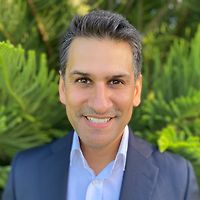South Auckland, Central Auckland > Public Hospital Services > Health New Zealand | Te Whatu Ora - Te Toka Tumai Auckland >
Oral & Maxillofacial Surgery - Regional Service | Auckland | Te Toka Tumai
Public Service, Oral & Maxillofacial Surgery
Today
8:30 AM to 4:30 PM.
Description
The Maxillofacial service is a regional service based at Middlemore Hospital and provides services to the wider Auckland region.
Oral and maxillofacial surgery is the surgical specialty which involves the diagnosis and treatment of diseases, injuries and defects affecting the mouth, jaws, face and neck.
Oral and maxillofacial surgeons treat impacted teeth, cancer patients requiring dental implants, jaw joint problems, salivary gland disease, dental infections, facial deformity and abnormal bite, oral cancer, other tumours and cysts of the jaws and facial trauma following accidents.
Consultants
-

Mr Richard Cobb
Oral and Maxillofacial Surgeon
-

Mr Christian Freudlsperger
Oral and Maxillofacial Surgeon
-

Mr James Olsen
Oral and Maxillofacial Surgeon
-

Mr Simon Roberts
Oral and Maxillofacial Surgeon
-

Mr Ryan Smit
Oral and Maxillofacial Surgeon
Hours
8:30 AM to 4:30 PM.
| Mon – Fri | 8:30 AM – 4:30 PM |
|---|
Services Provided
Benign tumours and cysts of the mouth, jaws and related structures are usually treated by surgery.
Benign tumours and cysts of the mouth, jaws and related structures are usually treated by surgery.
Benign tumours and cysts of the mouth, jaws and related structures are usually treated by surgery.
Gum tissue at the site of the implant is opened up to expose the bone. The bone is drilled and a titanium implant is inserted where the root of your tooth had been. Once the bone and gum has healed (3-6 months), the post is attached to the implant and the crown is placed over the post and cemented into place.
Gum tissue at the site of the implant is opened up to expose the bone. The bone is drilled and a titanium implant is inserted where the root of your tooth had been. Once the bone and gum has healed (3-6 months), the post is attached to the implant and the crown is placed over the post and cemented into place.
Gum tissue at the site of the implant is opened up to expose the bone. The bone is drilled and a titanium implant is inserted where the root of your tooth had been. Once the bone and gum has healed (3-6 months), the post is attached to the implant and the crown is placed over the post and cemented into place.
Dental infections are common and usually minor. They can however, spread to the cheek, throat and neck. Management involves admission, removal of the cause, drainage and antibiotics. Sometimes admission to the intensive care ward is necessary.
Dental infections are common and usually minor. They can however, spread to the cheek, throat and neck. Management involves admission, removal of the cause, drainage and antibiotics. Sometimes admission to the intensive care ward is necessary.
Dental infections are common and usually minor. They can however, spread to the cheek, throat and neck. Management involves admission, removal of the cause, drainage and antibiotics. Sometimes admission to the intensive care ward is necessary.
Orthognathic surgery involves correcting the position of the jaws to improve facial appearance and the bite. Orthognathic surgery is often preceded by orthodontic treatment.
Orthognathic surgery involves correcting the position of the jaws to improve facial appearance and the bite. Orthognathic surgery is often preceded by orthodontic treatment.
Orthognathic surgery involves correcting the position of the jaws to improve facial appearance and the bite. Orthognathic surgery is often preceded by orthodontic treatment.
Surgical management of fractures of the jaws, cheekbones, and eye-sockets is undertaken at Middlemore and Auckland City Hospitals.
Surgical management of fractures of the jaws, cheekbones, and eye-sockets is undertaken at Middlemore and Auckland City Hospitals.
Surgical management of fractures of the jaws, cheekbones, and eye-sockets is undertaken at Middlemore and Auckland City Hospitals.
Obstructive Sleep Apnoea (OSA) is a condition when people stop breathing while asleep.
Obstructive Sleep Apnoea (OSA) is a condition when people stop breathing while asleep.
Obstructive Sleep Apnoea (OSA) is a condition when people stop breathing while asleep.
Cancer of the mouth, jaws and related structures is managed through a multidisciplinary clinic and may involve surgery, radiotherapy, and chemotherapy.
Cancer of the mouth, jaws and related structures is managed through a multidisciplinary clinic and may involve surgery, radiotherapy, and chemotherapy.
Cancer of the mouth, jaws and related structures is managed through a multidisciplinary clinic and may involve surgery, radiotherapy, and chemotherapy.
There are three large pairs of glands (parotid, sublingual and submandibular) in your mouth that produce saliva which helps break down food as part of the digestion process. Salivary gland surgery involves the removal of one or more of the salivary glands for reasons including: tumours (benign or cancerous), chronic infections or blockages, salivary stones or injuries or cysts. Care is taken to avoid damaging nearby nerves, especially those that control facial movement.
There are three large pairs of glands (parotid, sublingual and submandibular) in your mouth that produce saliva which helps break down food as part of the digestion process. Salivary gland surgery involves the removal of one or more of the salivary glands for reasons including: tumours (benign or cancerous), chronic infections or blockages, salivary stones or injuries or cysts. Care is taken to avoid damaging nearby nerves, especially those that control facial movement.
There are three large pairs of glands (parotid, sublingual and submandibular) in your mouth that produce saliva which helps break down food as part of the digestion process.
Salivary gland surgery involves the removal of one or more of the salivary glands for reasons including: tumours (benign or cancerous), chronic infections or blockages, salivary stones or injuries or cysts.
Care is taken to avoid damaging nearby nerves, especially those that control facial movement.
Arthroscopic: several small incisions (cuts) are made over the joint in front of the ear. A small telescopic instrument with a tiny camera attached (arthroscope) is inserted, allowing the surgeon a view of the joint. Small instruments can be inserted into the other cuts to free up the joint by e.g. removing adhesions and scarring, or repositioning a disc. Arthroplasty (open surgery): an incision is made in front of the ear, giving the surgeon access to reconstruct the joint by e.g. smoothing joint surfaces, repairing discs or removing diseased tissue. If a joint replacement is necessary, a second incision under the angle of the jaw may be required.
Arthroscopic: several small incisions (cuts) are made over the joint in front of the ear. A small telescopic instrument with a tiny camera attached (arthroscope) is inserted, allowing the surgeon a view of the joint. Small instruments can be inserted into the other cuts to free up the joint by e.g. removing adhesions and scarring, or repositioning a disc. Arthroplasty (open surgery): an incision is made in front of the ear, giving the surgeon access to reconstruct the joint by e.g. smoothing joint surfaces, repairing discs or removing diseased tissue. If a joint replacement is necessary, a second incision under the angle of the jaw may be required.
Arthroscopic: several small incisions (cuts) are made over the joint in front of the ear. A small telescopic instrument with a tiny camera attached (arthroscope) is inserted, allowing the surgeon a view of the joint. Small instruments can be inserted into the other cuts to free up the joint by e.g. removing adhesions and scarring, or repositioning a disc.
Arthroplasty (open surgery): an incision is made in front of the ear, giving the surgeon access to reconstruct the joint by e.g. smoothing joint surfaces, repairing discs or removing diseased tissue. If a joint replacement is necessary, a second incision under the angle of the jaw may be required.
Wisdom teeth are the third molars right at the back of your mouth. They usually appear during your late teens or early twenties. If there is not enough room in your mouth they may partially erupt through the gum or not at all. This is referred to as an impacted wisdom tooth. Due to their location wisdom teeth can be difficult to clean and are more susceptible to decay, gum disease and recurrent infections. They can cause crowding of teeth and, on rare occasions, cysts and tumours develop around them. Your dentist will advise if some or all of your wisdom teeth need to be removed. Wisdom teeth will usually only be removed if your dentist believes they will be a significant compromise to your oral health. Impacted tooth extraction Your dentist may recommend extraction if you are at significantly greater risk of infection or tooth decay. Impacted teeth may be removed by your dentist or they may refer you to an oral & maxillofacial surgeon. An incision (cut) is made in your gum and access to the impacted tooth cleared by pushing aside gum tissue and, if necessary, removing some bone. The tooth is removed whole or in pieces and the gum stitched together over the hole.
Wisdom teeth are the third molars right at the back of your mouth. They usually appear during your late teens or early twenties. If there is not enough room in your mouth they may partially erupt through the gum or not at all. This is referred to as an impacted wisdom tooth. Due to their location wisdom teeth can be difficult to clean and are more susceptible to decay, gum disease and recurrent infections. They can cause crowding of teeth and, on rare occasions, cysts and tumours develop around them. Your dentist will advise if some or all of your wisdom teeth need to be removed. Wisdom teeth will usually only be removed if your dentist believes they will be a significant compromise to your oral health. Impacted tooth extraction Your dentist may recommend extraction if you are at significantly greater risk of infection or tooth decay. Impacted teeth may be removed by your dentist or they may refer you to an oral & maxillofacial surgeon. An incision (cut) is made in your gum and access to the impacted tooth cleared by pushing aside gum tissue and, if necessary, removing some bone. The tooth is removed whole or in pieces and the gum stitched together over the hole.
Wisdom teeth are the third molars right at the back of your mouth. They usually appear during your late teens or early twenties. If there is not enough room in your mouth they may partially erupt through the gum or not at all. This is referred to as an impacted wisdom tooth.
Due to their location wisdom teeth can be difficult to clean and are more susceptible to decay, gum disease and recurrent infections. They can cause crowding of teeth and, on rare occasions, cysts and tumours develop around them.
Your dentist will advise if some or all of your wisdom teeth need to be removed. Wisdom teeth will usually only be removed if your dentist believes they will be a significant compromise to your oral health.
Impacted tooth extraction
Your dentist may recommend extraction if you are at significantly greater risk of infection or tooth decay. Impacted teeth may be removed by your dentist or they may refer you to an oral & maxillofacial surgeon.
An incision (cut) is made in your gum and access to the impacted tooth cleared by pushing aside gum tissue and, if necessary, removing some bone. The tooth is removed whole or in pieces and the gum stitched together over the hole.
Parking
Please note that there are parking charges at Middlemore Hospital.
Website
Contact Details
Starship Child Health, Central Auckland
Central Auckland
8:30 AM to 4:30 PM.
Website
General Enquiries:
(09) 3074949
Outpatient Appointments:
(09) 638 0400 or 0800 PATIENT 0800 728 436 or scheduling@adhb.govt.nz
Emergency Department:
Open 24 hours / 7 days, Phone (09) 307 4902
GP/External Specialist Help Desk:
(09) 3072800
2 Park Road
Grafton
Auckland 1023
Street Address
2 Park Road
Grafton
Auckland 1023
Postal Address
Starship Child Health
Private Bag 92 024
Auckland Mail Centre
Auckland 1142
New Zealand
Middlemore Hospital
South Auckland
8:30 AM to 4:30 PM.
-
Phone
(09) 276 0000 or FREEPHONE 0800 266 513
Email
Website
Auckland City Hospital
Central Auckland
8:30 AM to 4:30 PM.
-
Phone
(09) 367 0000
Website
Was this page helpful?
This page was last updated at 12:14PM on July 17, 2025. This information is reviewed and edited by Oral & Maxillofacial Surgery - Regional Service | Auckland | Te Toka Tumai.

